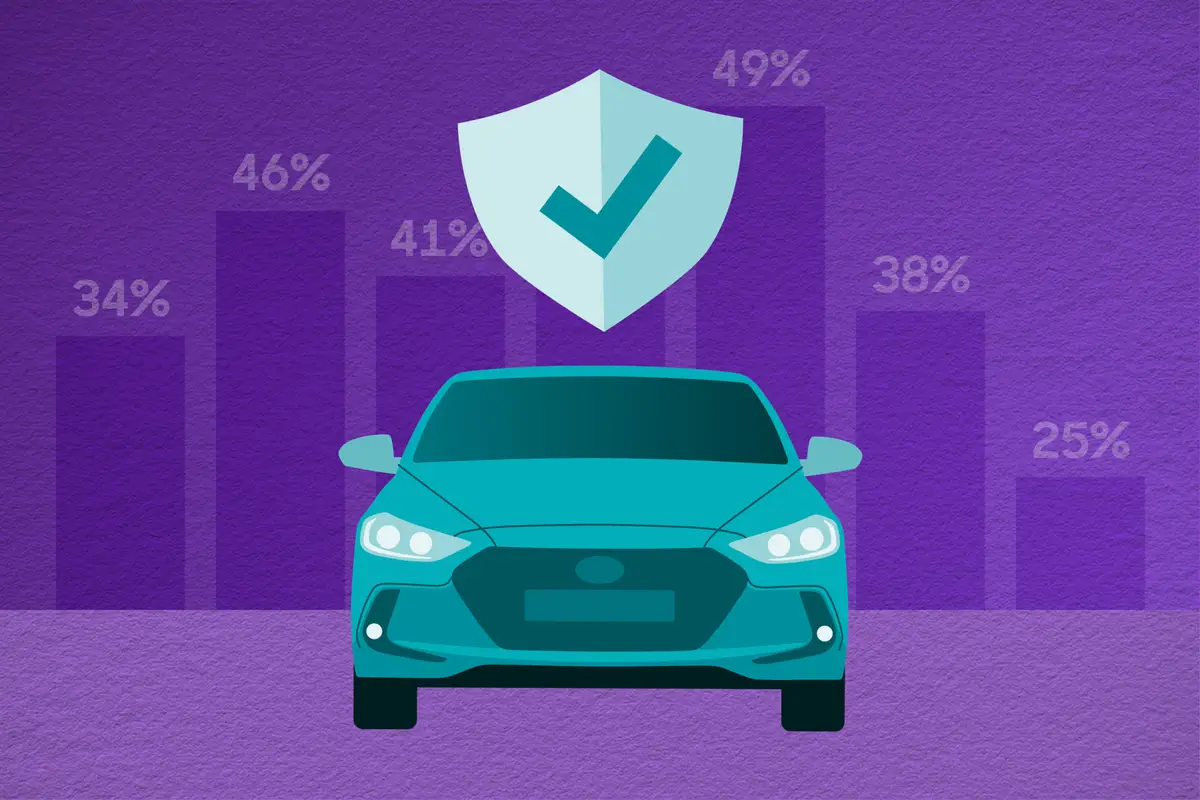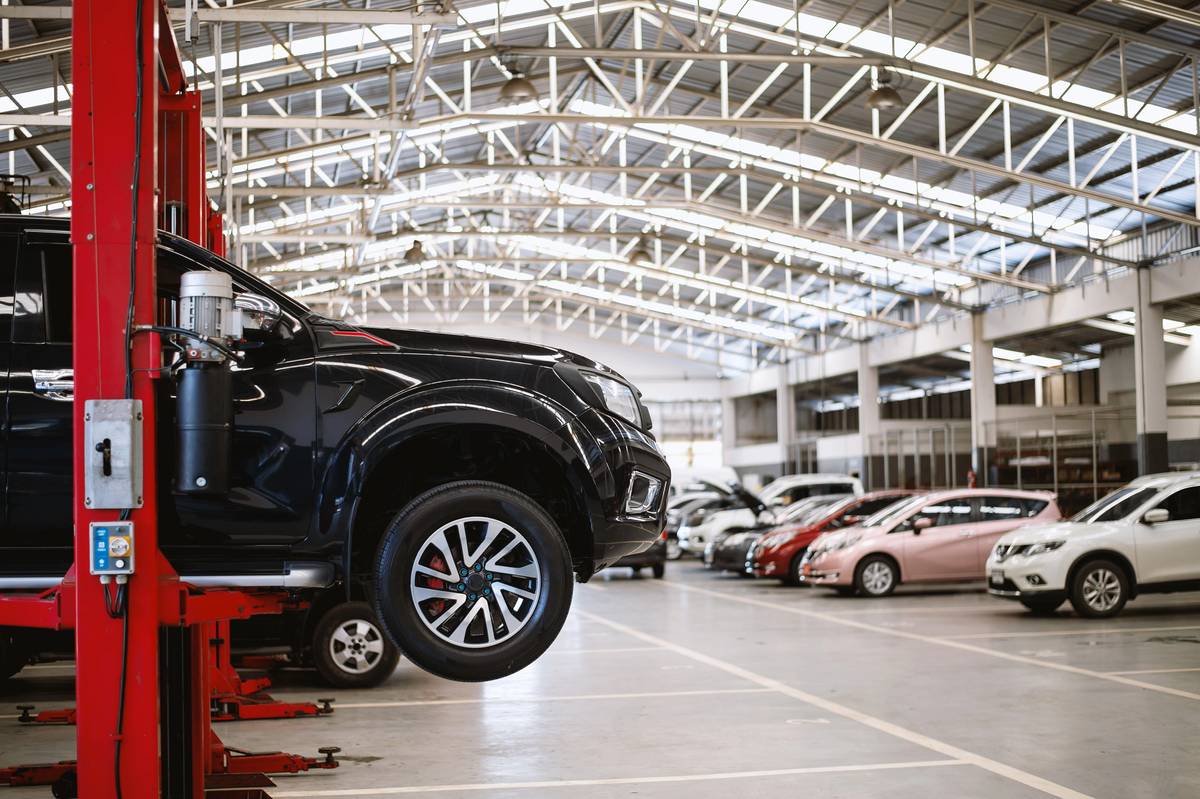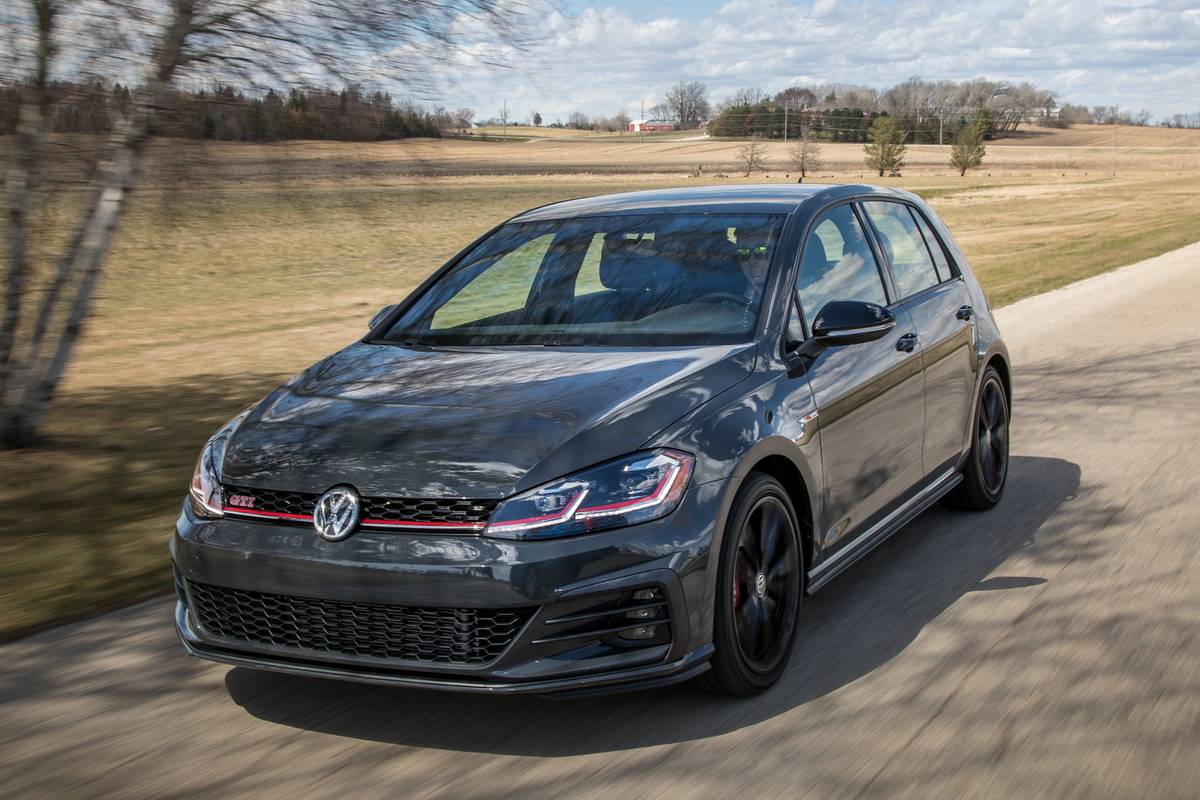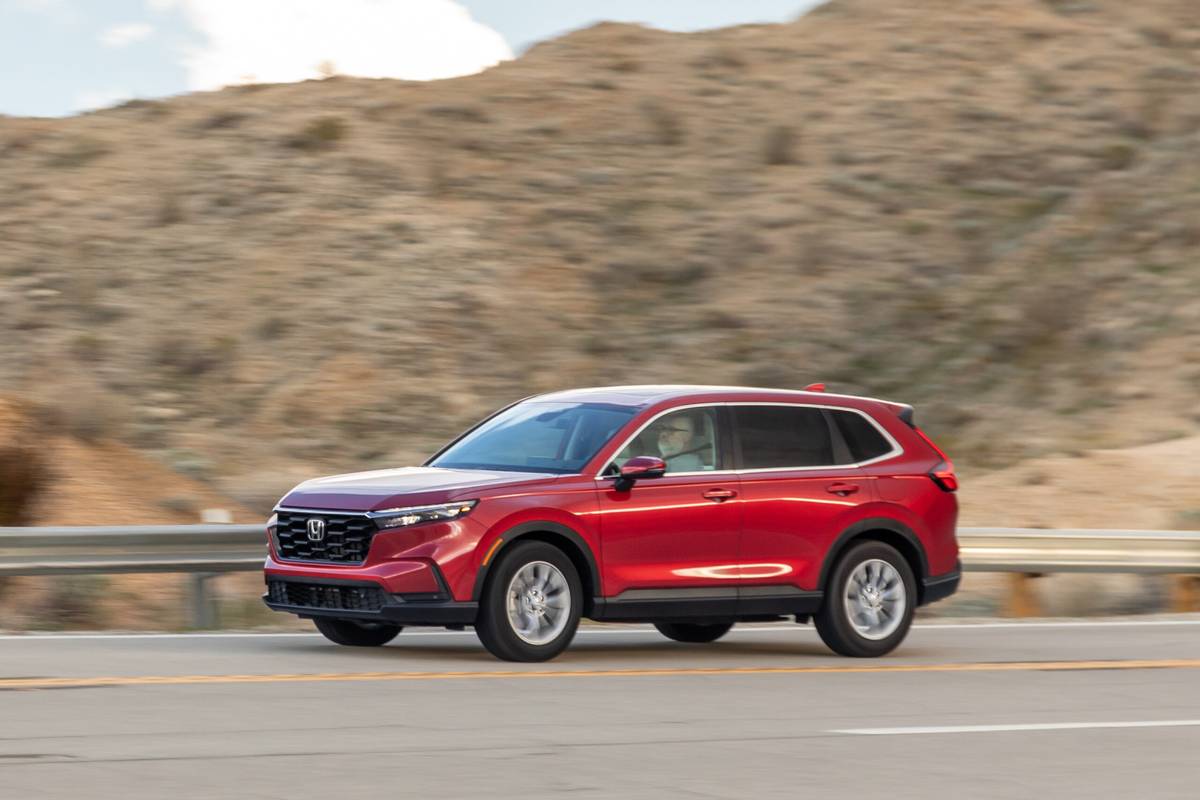How Will Tariffs Affect Car Insurance Costs?


Even if you’re not shopping for a new car, President Donald Trump’s latest round of tariffs on raw materials, vehicles and vehicle parts could cause financial strain on another front: car insurance. Auto insurance is a necessity for almost every driver on U.S. roads, and as cars and parts become more expensive, so do fixing or replacing existing vehicles.
Related: How Trump’s 25% Tariffs on Automobiles, Automotive Parts Will Affect You
“Tariffs have the potential to increase auto insurance premiums by increasing some of the costs that go into paying auto claims,” explained Stephen J. Crewdson, managing director of global business intelligence for insurance at J.D. Power, in an email to Cars.com.
New tariffs on whole cars as well as car components hit two major factors that determine how much it costs for an insurance company to pay customers’ claims: vehicle values and repair costs. The American Property Casualty Insurance Association estimates that personal auto insurance claims could rise between $7 billion and $24 billion across the industry. Because premiums reflect the cost of claims, when repairs and vehicle values go up, so do insurance premiums. Here’s the full rundown on how higher component and vehicle prices could factor into your insurance bills — even if you don’t make any claims.
Which Tariffs Could Make My Insurance Rates Go Up?

All cars imported into the U.S. are now subject to a 25% tariff as of April 3, which is paid by the importer before it lands at the dealership. While you may not see a full 25% jump in price thanks to the myriad factors that companies use to determine pricing, most analysts predict that at least some of those additional import costs will raise the price of new cars by thousands of dollars for consumers, particularly if the tariffs stay in place for the long haul. With higher prices pushing more shoppers to consider used cars, even used cars will eventually see a bump in price.
When cars are worth more, insurers have to pay more when they get totaled, and the threshold of what they will pay to repair a damaged car goes up, too. These extra costs on the insurer’s end have to be covered somehow, and that’s typically covered by charging vehicle owners more for coverage. After all, even in normal times, the more your car is worth, the more you typically pay to insure it.
Likewise, tariffs on automotive parts went into effect on May 3, 2025. This will almost certainly lead to higher repair costs, as roughly six out of 10 replacement parts used by auto shops are imported from Canada, Mexico and China, per American Property Casualty Insurance Association data cited by the Associated Press. As with whole cars, parts sellers and auto shops are unlikely to absorb all of these extra import costs, leading to more expensive repair bills for consumers.
Every car sold in the U.S. has some exposure to these parts tariffs. All 2025 models source at least 20% of their content from outside the U.S. and Canada. You can check out our annual American-Made Index of the “most American” cars, plus our roundups of cars made outside the U.S. and the American content of bestselling cars to get an idea of how much repairs could be affected by these tariffs.
With this tariff being so new, it’s hard to say exactly what the effect on parts costs and import times will be. The longer it takes for parts to come in, the harder it could be to build and repair new cars — and the more expensive it could make existing inventory of both parts and cars in the meantime.
Even American-made parts and cars will likely become more expensive under the new tariff structure thanks to a separate 25% tariff on steel and aluminum that went into effect March 12. While an exemption from this tariff was announced for vehicles and vehicle parts on April 29, companies importing raw materials (e.g., to stamp into fenders on the U.S. side) or components that are used in cars but not specified on the auto parts tariff list will still have to pay the metals tariff. Again, the more it costs to produce parts, the more expensive vehicles and vehicle repairs will become. Given that insurance claims include a lot of fender-benders, increased fender costs could be particularly painful to cover. It isn’t just body panels and frames that would be affected, though, as 63% of the average vehicle’s weight is comprised of steel and aluminum.
How Tariff Costs Trickle Down Into Your Insurance Rates

The extra costs of paying out claims can get even higher the longer the tariffs remain in place, as added tariffs and new processes at the border have a real chance at gumming up the entire production line. “The domino effect from ‘Liberation Day’ is just getting started,” explained Bankrate Insurance Expert Shannon Martin in an email to Cars.com. “Shipping delays from trade route disruptions, product shortages and manufacturing shutdowns will further increase the costs of cars and car parts, and this is before possible retaliatory tariffs are implemented from other countries.”
We’re already seeing some of those downstream effects happen. Stellantis, parent company to Alfa Romeo, Chrysler, Dodge, Fiat, Jeep, Maserati and Ram, halted production of several models almost immediately following the April 3 tariff announcement. While the automaker justified the move by saying it wants to sell down its existing inventory before restarting those lines, the more expensive it is to produce parts and vehicles, the tougher it is to justify production of parts and cars with lower margins.
Some suppliers have already hinted that the extra production and import costs with extra tariffs are too much for them to bear, with the CEO of seat belt and airbag maker Autoliv telling Automotive News that some parts suppliers may not survive this. As we just saw with the pandemic-era chip shortage, missing components can grind production to a halt, driving up prices for new and used vehicles alike.
In fact, we’re still feeling the effects of the pandemic’s halted production lines and shortages today, as there are fewer late-model, low-mileage used cars to choose from. Even before any tariffs went into effect, drivers were holding onto their cars longer in response to the higher cost of replacing them. Any shortage of comparable used cars, too, raises your vehicle’s value, which factors into what you pay for insurance.
Any extra costs, delays and shortages can affect not just how long it takes to repair a car, but also how much an insurance company can pay to provide a rental car while your vehicle is in the shop. “Once shipping delays for vehicle parts begin, policyholders will notice longer repair times and higher labor costs,” Martin explained. “Just like during the pandemic, this could even lead to rental car shortages and higher rental rates.”
When Could Insurance Rates Increase?

With tariffs just now going into effect on vehicles and car parts, it’s hard to predict when price increases for those goods will hit. Some dealerships are even advertising tariff-free cars they stockpiled before the April 3 tariff hit, and it will take weeks for tariffed inventory to hit dealerships and parts counters en masse. Adding to the uncertainty is the Trump administration itself, which has delayed and walked back some of its tariffs after they were announced.
One silver lining is the fact that insurance rates usually take even longer to reflect increases in automotive costs. “It takes some time for auto insurance premiums to adjust to changing claims costs as insurers typically need many months of data to set new rates, insurers need prior approval for rate changes in some states, and policies are typically for six months, so it can take time to change premiums,” Crewdson explained. Crewdson pointed to a recent period of inflated pricing as an example, which took between 12 and 18 months to be reflected in insurance premiums.
However, there’s a chance that any insurance rate increases could hit earlier than this, such as at your next six-month renewal, as even insurers were caught off guard by the new retaliatory tariffs that affect imported goods outside the 25% automotive tariff.
“No one anticipated a baseline global tariff of 10%, which changes everything,” Martin explained. “Just like consumers will start feeling the squeeze of higher costs for household staples soon, so will insurers. The global tariff and possible retaliatory tariffs may immediately impact carriers’ overhead for basics like office equipment and other administrative-related costs.”
How Much More Will You Pay for Insurance?

With so many variables still in play, from automotive pricing to the specifics of the upcoming parts tariff, it’s still too early to tell exactly how much tariffs more customers will pay for insurance premiums. That hasn’t stopped some analysts from trying to predict it, however, with an Insurify study estimating that the average cost of car insurance in the U.S. could rise by 9% by the end of the year.
The exact amount a policy can increase due to extra tariff costs will vary, as different policies cost different amounts depending on the car, its location and how much coverage you have. “Policyholders with full coverage will see a higher increase than those with liability only, but how much of an increase will depend on events that haven’t transpired yet,” Martin said.
There are still other ways insurers could make up for the extra tariff-related costs beyond premiums. Underwriting — where an insurer determines whether a car and driver are worth insuring and pricing out the premiums that driver will pay if so — could become tighter, making it more difficult and more expensive to insure vehicles. “Since the [monetary] risk of car accidents will increase for carriers, rate changes related to driving behaviors, such as moving violations and accidents, will likely increase,” Martin said. Additionally, insurers change certain procedures or try to generate extra money through fees, with Martin noting that some may give less leeway when it comes to your payment’s due date.
What You Can Do About Higher Insurance Rates
Most economists and industry professionals agree that a prolonged period of high tariffs will lead to auto insurance becoming more expensive and harder to get. Consumers are already struggling to meet payments as it is, as Martin noted that the annual costs of a full-coverage auto policy increased over 30% since 2023. Her biggest piece of advice is to keep enough coverage to at least meet the minimum coverage requirements of your state. The immediate costs of getting caught with an uninsured vehicle are expensive, as you could lose your license, potentially see jail time or have your car impounded — all of which can flag you as a riskier person to insure when you get auto insurance in the future. The bigger risk you are, the more you’ll ultimately pay for insurance.
So, talk to your insurance company if you’re struggling with higher payments before you rack up costly late fees or your policy lapses. See if you qualify for a special discount or promotion that could lower your rate, too, or inquire about moving to a lower level of coverage that could reduce your payments.
A higher deductible or fewer endorsements for additional coverage can make a policy more affordable. Likewise, you can shop around with different insurance companies to make sure you’re getting the best rate. Many insurers also offer discounts if you bundle multiple forms of insurance with them, such as combining your auto insurance with your home or life insurance. However, you should be wary of any discount offer that uses a tracker to collect and send data on your driving habits to the insurance company. These can report collision avoidance maneuvers like hard braking or even trips taken late at night out of context to deem you a risky driver, which can backfire and end up raising your rates.
All in all, taking the time to see how you can reduce your payment is far less expensive than getting caught without it. We also recommend staying on top of maintenance so it’s less likely that you’ll need insurance to chip in for a major repair or a collision caused by a failure on your car. If you can afford to stock up on the parts you need for repairs and maintenance now, act soon, as tariffs are already starting to raise prices for consumers.
More From Cars.com:
- How Much Car Insurance Do I Need? 5 Key Coverage Considerations
- What Do the New Tariffs Mean for Car Buyers?
- 2025 Cars.com Affordability Report: Best Value New Cars
- If Tariffs Increase Car Prices, How Else Can You Save Money?
- More Tariff News
Related Video:
Cars.com’s Editorial department is your source for automotive news and reviews. In line with Cars.com’s long-standing ethics policy, editors and reviewers don’t accept gifts or free trips from automakers. The Editorial department is independent of Cars.com’s advertising, sales and sponsored content departments.

Former News Editor Stef Schrader joined Cars.com in 2024 but began her career in automotive journalism in 2013. She currently has a Porsche 944 and Volkswagen 411 that are racecars and a Mitsubishi Lancer GTS that isn’t a racecar (but sometimes goes on track anyway). Ask her about Fisher-Price Puffalumps.
Featured stories




